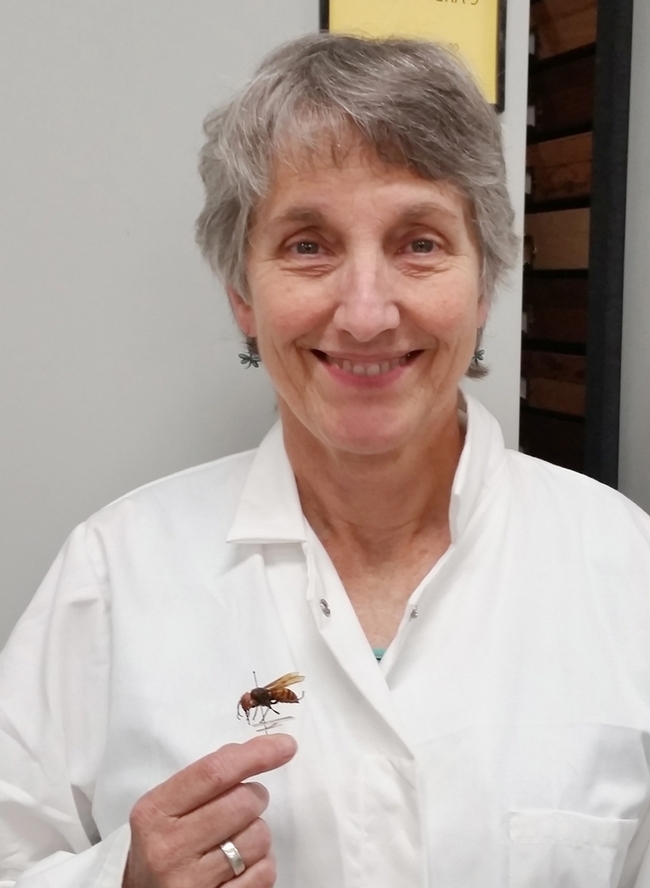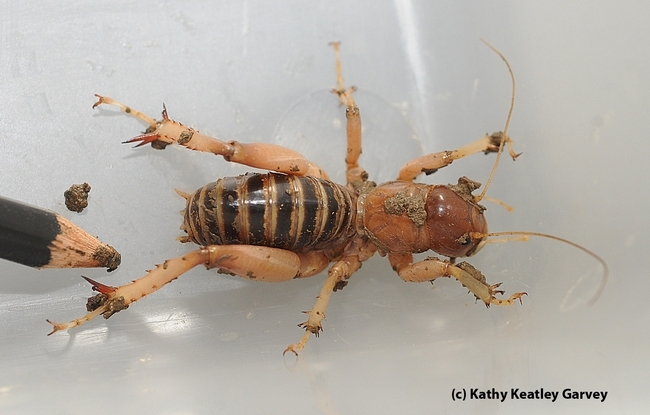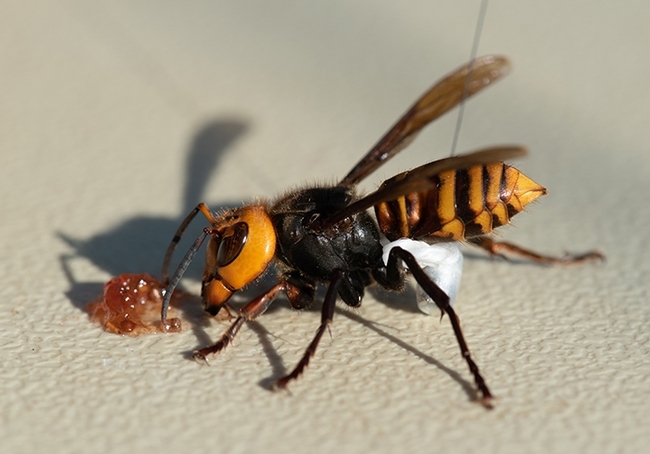
Not even close.
It's a Jerusalem cricket, sometimes called a "potato bug."
The be-on-the-lookout (BOLO) for the Asian giant hornet detected in Canada and Washington state has resulted in scores of queries and submissions of not-even-close specimens.
The poor ol' potato bug gets blamed for being an Asian giant hornet, which the media labeled "the murder hornet." (Wish they wouldn't.)
"Some of the local insects that have been confused with invasive hornets are Jerusalem crickets, bald-faced hornets and cicada killers," says Lynn Kimsey, director of the Bohart Museum of Entomology and professor of entomology, UC Davis Department of Entomology and Nematology.
In a Bohart Fact Sheet, she writes:
"Jerusalem crickets are among the largest insects found in western North America. They range in size from 1-2½ inches long. In North America they are found only west of the Rocky Mountains. The large shiny brown abdomen with dark stripes, large ovoid head, and spiny hind legs are diagnostic features of these crickets. Both juvenile stages and adults are wingless and crawl slowly. These large crickets belong to the family Stenopelmatidae. The most widespread species found in California is Stenopelmatus fuscus. Even though they are essentially harmless, there is considerable mythology about the dangerous nature of these large wingless, ground dwelling insects. Much of this mythology is due to their large size, large, bald humanoid head, and massive jaws. Jerusalem Crickets can bite, so some care should be taken when handling them; otherwise, despite their ferocious appearance, they are harmless. They are also not considered to be agricultural pests, as they do not cause noticeable damage to garden or crop plants.
"Although the officially recognized common name for this insect is Jerusalem Cricket, a number of other names also are used including: "Potato Bugs", Woh-tzi-Neh ("old bald-headed man") or "Niña de la Tierra" ("little girl of the earth"). The name "Potato Bugs" is used because they occasionally will feed on potato tubers. Jerusalem crickets are nocturnal, coming out at night to feed. During the day, particularly in the summer months, they can be found underneath rocks, logs or boards. These crickets are to some extent scavengers, feeding on plant roots and tubers, and sometimes even on dead animal matter. Unlike most other crickets, female Jerusalem Crickets sometimes kill the males after mating. Jerusalem crickets can generate sound by rubbing the back leg against the side of the abdomen (stridulation). These large crickets are an important source of food, particularly during the winter for a number of different birds of prey including barn and burrowing owls and small hawks, like kestrels."
Kimsey, a noted authority on Hymenoptera (bees and wasps) and a past president of the International Society of Hymenopterists, is highly sought for her expertise on the Asian giant hornet.
And now, in a collaborative project with the U.S. Department of Agriculture (USDA), the Bohart Museum scientists are imaging insect specimens misidentified as the invasive hornet. The Bohart Museum houses a dual system, a GIGA macro system and a Leica microsope system, the later necessary for imaging smaller insects. "Examples of smaller insects," Kimsey says, "would be some of the parasitoid wasps which can be 1 mm in length. Both systems can offer images at 100x life size."
"Ultimately these images will be used to educate and train inspectors and USDA agents who are tasked with intercepting invasive insects in cargo loads and shipping containers from around the world," Kimsey says.
Now give the poor ol' potato bug a break. It is NOT the Asian giant hornet...and please don't call it a murder cricket.
Attached Images:

